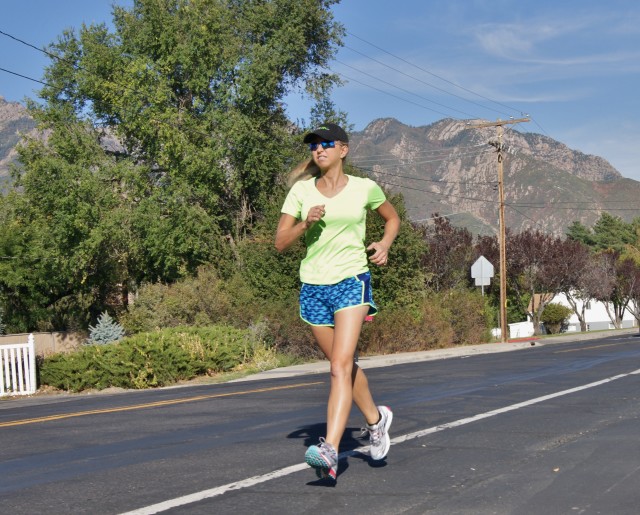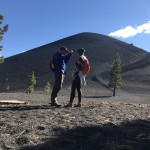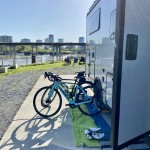This post may contain affiliate links.
I started running in my early 20’s, and boy oh boy it wasn’t pretty. I was so out of shape, my first workouts were bouts of jogging that lasted about 10 seconds before I’d be huffing and puffing and attempting to shove my lungs back down my throat. And then came the shin splints and sore hips. I suffered shin splints for years…and looking back, I’m shocked I never gave up. I remember many days of ice packs on my shins, legs propped up, and barely being able to walk, yet pounding the pavement all over again the next day. Man, I was stupid.
These days, I run 3 to 5 days most weeks. And being a personal trainer to boot, I’ve learned a lot since my early running days. My biggest mistake starting out was not allowing for recovery between workouts. I had this weird and wrong belief that if I’d just exercise more, my body would adapt and all my injuries would go away. Not so. Without allowing any recovery time, my body wasn’t able to repair. I wasn’t giving it the chance to adapt to the training workload so it could meet the new demands of running.
Recovery is just as valuable as training, and possibly more so. And let’s be clear on what “recovery,” actually is, and what it’s not. Recovery is a process going on inside your body to return it to “normal” after stressful physical activity. It is also the period of time where your fitness actually grows. Workouts don’t build fitness, they break your body down. It is the recovery time that builds your body up, a little stronger, a little faster. Which makes recovery some pretty powerful stuff, right? But just to clarify: Recovery is NOT sitting on the couch all day watching TV. You’ve got to be “active” about your recovery. Below is a list of some of my favorite post-workout recovery methods that I personally use after hard training sessions. Not only will they help maximize the muscle-soothing, injury-preventing effects of your recovery time, but also they’ll help you face your next training session fresh and ready to go.
Post-Workout Recovery Techniques
1. Hydration: One of the first things I do after a hard training session is hit the fridge for a water bottle, and in hot weather or extra long runs, I’ll even take some electrolytes tablets.

Post-training water and some electrolytes…Bioplasma by Hyland’s.
Many people don’t understand the importance of electrolytes. Without getting too heavy into it, they are essential for our bodies to function all the way down to the cellular level. Since exercise increases the body’s need for water and electrolytes, being dehydrated will delay the recovery process, and can lead to all sorts of problems, even serious ones. So, to help your body repair more efficiently and to avoid any consequences of dehydration and mineral imbalance, make sure you drink lots and replace your minerals. This goes for after a run, and on your recovery days as well.
2. Compression Socks and Recovery Shoes: While I’m not going to tell you compression socks will make you faster, I do believe they’re an effective aide in your training recovery.
Exercise brings on increased blood flow, which can cause blood pooling. Our wimpy veins have a hard time returning our blood, against gravity, back up to our heart. The force of compression socks restricts blood vessels enough so that our veins can more effectively do their jobs, thus speeding recovery. Compression socks and sleeves aren’t cheap, but they’re so worth it. There aren’t words to explain how wonderful they feel after a long hard workout. You’ll want to measure your calf, as compression gear is sized based on calf circumference. Expect to have a struggle getting your compression socks or sleeves on. If not, they probably aren’t tight enough.
3. Self-Massage & Foam Rolling: Much of the soreness that goes along with training occurs when our muscles and fascia (connective tissue) become knotted; making movement less efficient and more painful.
Self-massage helps break up those knots and any scar tissue that has formed. It also reduces stiffness and increases circulation. I’m pretty addicted to self-rolling with my massage stick, as well as foam rolling. My calves, especially, have a love/hate relationship with these massage techniques…as rolling can get pretty uncomfortable for tender muscles. For beginners, the massage stick is much easier than foam rolling, and is a great place to start.
4. Legs Up The Wall Pose and Meditation: “Legs up the wall” is an incredibly restorative yoga posture that has many important benefits to recovery, and I turn to it frequently as part of my recovery regime.
It helps with venous return and fluid pooling (the whole gravity thing again), it relaxes you enough to regulate your hormones (which tend to get stressed during exercise), and it gives your hamstrings, low back, and glutes a bit of a stretch. I like to use the time in the pose to practice some mindful meditation. Meditation calms the mind and body even further, which is yet another big boost to your recovery.
So there you go, my favorite recovery strategies, hopefully you’ll try some of them out. And I also hope you’ll keep training smart and recovering smart! Before you know it, you’ll see those changes you’ve been working towards…and that’s what makes it all so, so worth it.














